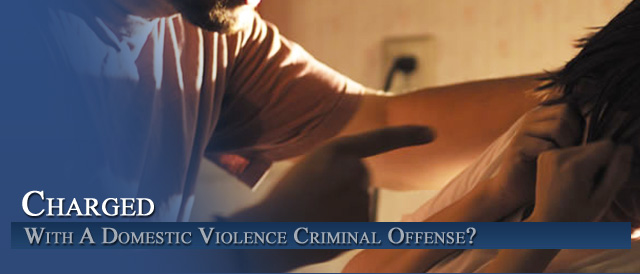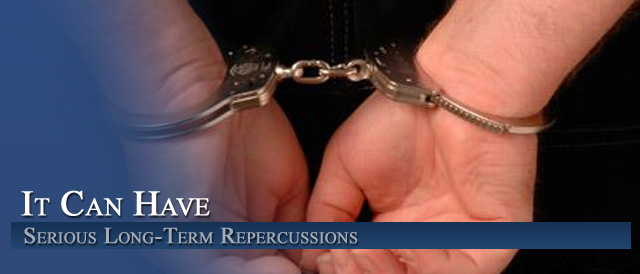




FAQ: Domestic Violence Defense Law- The Battered Woman Syndrome and Self Defense Law in Colorado
FAQ: Domestic Violence Defense Law- The Battered Woman Syndrome and Self Defense Law in Colorado
Colorado Domestic Violence Law – Defending Victims of Domestic Violence Who Kill Their Batterers
Battered Woman Syndrome was developed in the mid-1970s to help combat the sex-bias present in the criminal law, particularly in the law of self-defense. Prior to this time, the law did not recognize the reasonableness of a battered woman’s use of force when she killed her batterer.
Scholars therefore developed Battered Woman Syndrome as a way to explain the experiences of a battered woman, and why her actions in self-defense were justified. As Battered Woman Syndrome was used in more and more trials, however, expert testimony began to take the form of excuse, rather than justification. A battered woman was excused from her conduct because of her irrationality or incapacity. This prompted many critics to call for an end to expert testimony on Battered Woman Syndrome.
Use Of An Expert in Battered Woman’s Syndrome Cases
An expert’s testimony on the social norms that tolerate domestic violence, and identifying these norms as a true “syndrome,” enables experts to educate a jury about domestic violence, without labeling the victim with a mental health type pathology.
It is a necessary evil that this form of a women’s self-defense been forced to accept to reinforce stereotypes of gender roles and the view of women as emotional, irrational creatures. At best, it can educate others about the prevalence of domestic violence in our society, and also expose the societal biases and stereotypes that feed into this violent epidemic.
It is a legal fiction that utilizes expert testimony to prove that a woman’s actions in self-defense were “reasonable.” It is battered woman syndrome. Battered woman syndrome was introduced to help explain the reasonableness of a woman’s actions in self-defense against her abuser.
It was pioneered by Dr. Lenore Walker, and was developed to allow experts to testify at trials, most commonly where a woman was on trial for killing her batterer, and was alleging self defense. The expert explains why a battered woman had special knowledge of the imminence of an attack, as well as why retreat was not a reasonable alternative. In other words, the expert explained the reasonableness of the woman’s actions in a situation in which most jurors would probably not be familiar.
This practice of using expert testimony in criminal trials to explain the reasonableness of a victim-defendant’s actions against her abuser has been a hotly contested area of criminal law. Some scholars praise it as a way of dispelling the myths that surround battered women, while others decry it as a perpetuation of stereotypes of women as irrational, unreasonable victims.
Certainly the label of “syndrome” has fueled the critic’s arguments, and has carried with it the stigma of psychological disorder. The word “syndrome” carries with it negative connotations, and there is a tendency for members of the legal community and society at large to interpret battered woman syndrome as some sort of incapacity defense. Despite these faults, the ability to present expert testimony at trial for a battered woman who has killed her abuser in self-defense is valuable. It has the potential to educate members of the community on the pressures that create the environment that tolerates domestic violence.
The focus of expert testimony should be not only on the personal syndrome but the larger societal syndrome that has placed the battered woman in a situation where her only option was to kill her batterer. The necessity of her actions was caused by the community, and experts should point to the failures of society andthe government at large to offer battered women reasonable alternatives.
This goes to the heart of the theory of self-defense as one of necessity,10 and shows that the battered woman’s actions should not be “excused” because of any personal ailment or shortcoming, but should be recognized as justified because of the situation in which she was placed.
Expert Testimony and Battered Woman Syndrome
Origins of the Battered Women’s Syndrome
[I]n many ways the law still equates husband-killing with treason: such killing is presumed unreasonable, and the woman is seen as morally responsible for the man’s violence against her. The law of self-defense is framed in terms of how men ‘reasonably’ respond to the violence of other men; women killing men isn’t part of the picture. The basic terms are skewed so that women who kill their batters rarely fit the male-defined standard of a justifiable killing.Cynthia Gillespie further detailed, “A woman who defends herself against a man’s violence is either a criminal or crazy; our society is very reluctant to say that she is ever justified.” The criminal law—specifically the law of self-defense—was not adequately taking into account the of women as being unreasonable, sex-bias in the law of self-defense, and myths and misconceptions concerning battered women have operated to prevent battered women from presenting acts of homicide or assault committed against batterers as reasonable self-defense.”
This deficiency was and is alarming, given that the “overwhelming number of cases in which courts have addressed issues of women’s self-defense have involved battered women charged with killing men who battered them.”32 To help remedy this situation, the women’s self defense movement introduced the concept of Battered Woman Syndrome (“BWS”) in the 1970s.
BWS, developed in large part by Dr. Lenore Walker,34 is “a series of common characteristics that appear in women who are abused physically and psychologically over an extended period of time by the dominant male figure in their lives.
Professor Schneider explains:
Expert testimony on battered woman syndrome was developed to explain the common experiences of, and the impact of repeated abuse on, battered women. The goal was to assist the jury and the court in fairly evaluating the reasonableness of the battered women’s action and to redress this historical imbalance, at least where the testimony was proffered as relevant to self defense.
BWS was thus introduced to help explain the reasonableness of a battered woman’s self-defense actions.
The introduction of BWS was intended to “overcome sex-bias in the law of self-defense and to equalize treatment of women in the courts.” This sex-bias in the law of self-defense is evident in the normal formulation of reasonableness that asks what the reasonable man would do.
In other words, “Jurors in self-defense cases are usually told to assess the reasonableness of the defendant’s act by asking themselves whether what he or she did was the sort of thing that would have been done by a reasonable man in the same circumstances.”
Gillespie explains:
The ultimate question in a self-defense case is whether the defendant’s act was a reasonable one. Even if she can successfully negotiate the legal hurdles of seriousness, imminence, retreat, and the like, she must still convince the jury of two things: that her belief that she was in imminent danger of death or serious injury was reasonable under the circumstances and that her response to that perceived danger was a reasonable one, not an overreaction.
Self-defense law asks what a reasonable man would have done in a battered woman’s situation,
and this question has proven inapposite to the reality faced by battered women. It was thus recognized that the “reasonable man” standard could not explain the justified self-defense actions of a battered woman. Even application of a “reasonable woman” standard is not entirely helpful, because the reasonable woman would still be viewed as the stereotypical, passive female, who must submit to her man’s violence without complaint.
Therefore, lawyers defending battered women who had killed needed a way “to explain to the jury that the woman’s behavior, which seems to defy common sense, was entirely characteristic of women in her situation.” The way this could be done was through the testimony of an expert witness. This testimony is permissible because the environment in which a battered woman lives is “beyond the ken of the average layman,” and “[t]he reasonableness of the woman’s fear and the reasonableness of her act are not issues which the jury knows as well as anyone else.”
The expert therefore is able to provide to the jury information about “otherwise puzzling aspects of a woman who kills her husband is viewed as inherently unreasonable because she is violating the norm of appropriate behavior for women.”
However, the requirement that the jury must find the defendant’s action reasonable before it can acquit her presents another major source of problems from women in self-defense case. The jurors are uninvited—indeed obligated—to substitute their judgment for hers in a situation that most of them can barely imagine being in and seldom understand.”
Controversy over Battered Woman Syndrome
Critics of this expert testimony have expressed concern about the implications of calling an expert to translate a battered woman’s experience to a jury. Professor Schneider points out,
“The notion of expert testimony was predicated on an assumption that battered women’s voices would not be understood or were not strong enough to be heard alone in the courtroom.”
She further wrote that “[this] is disturbing, for it suggests that only experts can bridge the gap between the individual and collective experience of women and counsel jurors and society that an individual woman’s experience has a social validity and commonality that might be reasonable.” At the same time, however, Professor Schneider recognized that this testimony was necessary, to add authority to the battered woman’s claim that her actions were reasonably necessary, because this claim “threatens deeply held stereotypes of appropriately submissive female conduct and of patriarchal authority.”
In response, supporters of BWS argue that patriarchal values and gender-stereotyping that belie the general public’s understanding of domestic violence must be dispelled through expert testimony. The neutral, third-party expert is able to point to a larger truth about the common experiences of battered women, which adds credibility to the victim-defendant’s claim. As one court noted, the expert testimony is necessary to combat “stereotypes and myths concerning the characteristics of battered women and their reasons for staying in battering relationships.”
There is some question, however, whether testimony about BWS serves to dispel gender stereotypes or cultivate them.
The “clinicalization” of the battered woman’s experiences as a syndrome implicitly suggests that a battered woman’s “response to violence is negative behavior that stems from weakness or emotional damage and requires explanation in clinical terms.” The expert is typically called to answer questions like “why didn’t she just leave?”, which assumes that the woman is the one who is misbehaving by not leaving, that leaving is “the normal and reasonable response to being battered” and “if a woman fails to leave, her staying with her mate is peculiar behavior that requires explanation or excuse.”
Lawyers argue and courts admit this testimony when it focuses on a woman’s victimization, incapacity, or “learned helplessness,” but when battered women do not fit this narrow model of a passive, victimized female, they are oftentimes not permitted to introduce expert testimony on BWS. As explained by Professor Schneider, “Courts appear to be willing to recognize the importance of expert testimony when the rationale for admission is women’s individual and collective psychological ‘weakness.’ In the words of Professor Anne Coughlin, BWS “reclaims for women all of the insults of the gender ideology of domesticity while endorsing none of its compliments.”
Even though expert testimony is supposed to “shed light on the reasonableness of the defendant’s behavior,” the term “battered woman syndrome” instead tends to “conjure up images of a psychological defense—a separate defense and/or an impaired mental state should be admitted to explain the effects of a history of abuse on a defendant’s behavior and perceptions and to rebut popular myths and misconceptions about battered women.”
Professor Coughlin has been particularly critical of BWS, arguing, “The [battered woman syndrome] defense itself defines the woman as a collection of mental symptoms, motivational deficits, and behavioral abnormalities; indeed, the fundamental premise of the defense is that women lack the psychological capacity to choose lawful means to extricate themselves from abusive mates.”
In this way, BWS “revives concepts of excuse.”Applying excuse theory to a battered woman’s act of self-defense reinforces the idea that domestic violence is a private, personal problem. This sex-bias “increases the probability that the trier of fact will prefer to excuse the woman, seeing her act as ‘unreasonable’ self-defense.” So long as the battered woman’s self-defense claim is supported by testimony of her “syndrome,” the danger of the fact-finder falling back on old stereotypes of female incapacity to excuse the victim-defendant’s conduct remains.
Despite its shortcomings, BWS remains the only viable alternative for women wishing to prevent evidence of the general effects of battery at their trial. [A] profound irony marks this expert testimony: Domestic violence is beyond the layman’s ken (even though we know it is fairly common) because some jurors will interpret their own experience through cultural perceptions that distort understanding and make it difficult for all of us to talk about the subject, and because cultural stereotypes will shape the vision of battered women held by jurors who have no personal experience of such violence as well. Expert testimony, designed to overcome these stereotypes and help show the context for the woman’s actions, has through the pressures of the legal system contributed to a focus on victimization that is understood as passivity or even pathology on the part of the woman. This image further promotes many cultural stereotypes, and may contribute to further stigmatizing of battered women and further denial by women of the dangers they face through domestic violence. In a particular legal action, an individual battered woman’s experience is at least partly explained, but the cultural perceptions that limit broader social understanding may remain untouched, and go on to shape legal action again.
“[T]he practical consequence of BWS is to provide an imperfect solution that at a minimum supports a claim of imperfect self-defense.” Professor Mahoney also remarks, “I would not choose to discard such a major tool [BWS] in the effort to explain women’s experience in court, just because it has proved vulnerable to distortion in culture and law—we need more, not less, explanation.” It is the only judicially recognized method of providing this explanation, and therefore, absent dramatic changes to the law, reform must come from within the testimony on BWS itself.
The Battered Woman Syndrome Paradox
The concept of BWS is essentially a paradox. The word “syndrome” necessarily implies some sort of disorder, and is commonly used by psychologists to describe a mental illness. Using testimony about a “syndrome” to explain what a reasonable person would do is a contradiction in terms—it is a legal fiction that the legal community has developed to allow experts to testify in trials of battered women. This allows us to prevent the unjust result of sending a victim to jail for acting out of necessity, but doesn’t require us to change the actual substantive self-defense laws.
This use of expert testimony to explain reasonableness, though logically baffling, is the only realistic option for introduction of evidence of battering under the current evidentiary laws. Judges and juries still require an expert to give the battered woman’s claim of self defense a voice of authority, because her claim challenges long held social norms. It is assumed that jurors cannot possibly see the correctness of the woman-defendant’s claims of reasonableness without the help of an expert. Domestic violence is so far beyond the “ken of the average layman,” and so ingrained in our beliefs that it is a private, family matter, that an expert is required to fit this into commonly held views of reasonableness.
Of course, there are contradictions inherent in this argument. BWS testimony may have been developed to dispel common myths and stereotypes about battered women, but it has been accepted by the larger legal community because of its tendencies to reinforce social norms and patriarchal values. Courts are more likely to accept the expert’s testimony of BWS if the victim fits the model of a hapless victim.
The testimony is used to answer questions entirely inappropriate for considering her self-defense claim, such as why she didn’t just leave. Further, the expert testimony perpetuates the belief that the victim-defendant needs help to convey her reasonableness to the jury, and this help must come from a neutral, detached “expert” who legitimates the woman’s story through social science. This purges the woman’s experience of all its female aspects, and replaces it with a sterilized description of a psychological “syndrome.”
Thus, this fits in with long-held beliefs that women are helpless, irrational victims whose actions are not recognizable as reasonable are rational. As previously discussed, testimony regarding BWS is inherently filled with implications that the victim-defendant is somehow psychologically impaired or incapacitated. She didn’t leave because of the “syndrome.” She overreacted and lashed out against her abuser because of the “syndrome.” This testimony ends up resurrecting excuse doctrine to excuse this poor woman of her unreasonable conduct, compelled by her personal, private syndrome. As a result, we don’t have to look too hard at the public, societal pressures that create an environment that tolerates domestic violence: it is the individual defendant’s personal problem. Her syndrome is what kept her from doing what society sees as reasonable for women in domestic violence relationships: she didn’t leave because of the syndrome. Her incapacity is the syndrome.
But we must remind ourselves that BWS is not a separate defense; it is merely a poorly named shorthand for an expert’s testimony about the effects of battering on women. BWS is meant to provide context to a woman’s actions, and provide evidence that this context is common among women in violent intimate relationships. We must accept that BWS is generally accepted because it reinforces patriarchal norms, but at the same time seek to change those norms from within the system. In this way, expert testimony may resurrect the seemingly forgotten theory of necessity that underlies justification defenses.
Battered Women’s Syndrome as a Justification Defense
A justification defense demonstrates a normative judgment that the action in question is socially desirable. Thus, it is a publicly acknowledged just action. Defenses of necessity, such as self-defense, are based on this notion that a person should not be punished for being placed in an impossible situation. The situation compels the action—not the particular person’s characteristics.
As Professor Schneider explained:
Excuse suggests that the act is personal to the defendant, a private act, in contrast with a more public and common sense of rightness which justification reflects. Excuse suggests a sense of the subject, while justification implies a more objective statement. Redrawing the boundaries of justification and excuse means recasting the boundaries of the private/public and subjective/objective oppositions, making women’s experiences generally, and battered women’s experiences and perceptions specifically, more public and legitimate, and also ore objective.
Self-defense law in particular recognizes the fundamental right to defend one’s self against harm from others, and the reasonableness of this action.
In cases of battered women who kill, what creates the necessity of her action? How is it ever her only reasonable option to kill her batterer? Instead of focusing on the victim-defendant’s personal syndrome to explain her actions, expert testimony should instead focus on exposing the social norms and failings of local governments that have created this situation of necessity. The true syndrome is the social mores that view men as entitled to act violently toward their partners, and see domestic violence as a private, family matter.
Credit for this article (although it is heavily edited by H. Michael Steinberg ) is given to Mary Helen Wimberly ABA Commission on Domestic Violence Vanderbilt University Law School 2007 Law Student Writing Competition.
Other Articles of Interest:
- Domestic Violence and Syndrome Evidence
- Federal Enforcement of Domestic Violence Protection Orders
- Home Page
- Colorado Criminal Domestic Violence Cases – The Critical Impact of Expert Opinions On The Jury – The Battered Woman’s Syndrome And Other Issues For Expert Testimony
- Colorado Criminal Domestic Violence Law – The Impact of the Federal Violence Against Women Act in Colorado Domestic Violence Cases.












